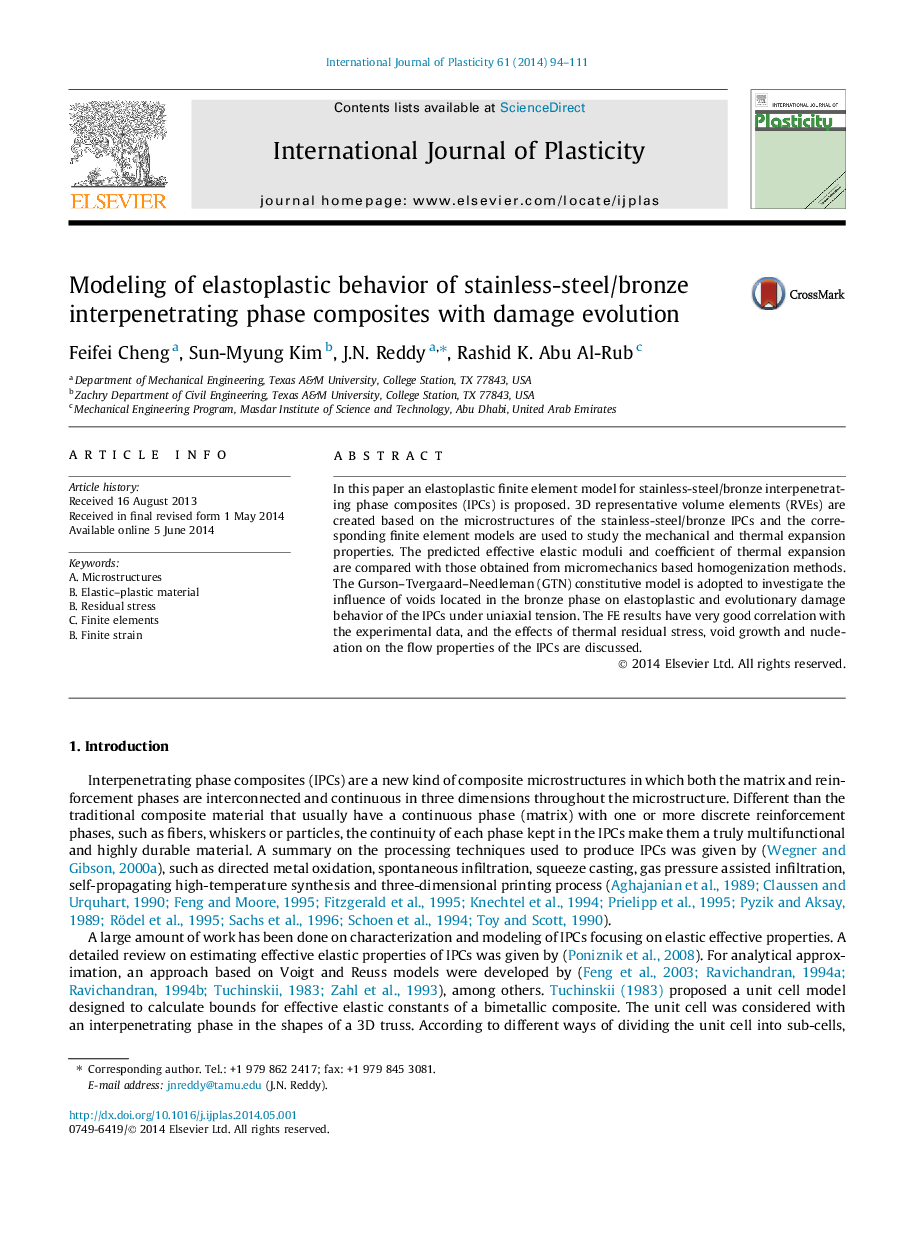| Article ID | Journal | Published Year | Pages | File Type |
|---|---|---|---|---|
| 786125 | International Journal of Plasticity | 2014 | 18 Pages |
•3D RVEs were created based on the microstructures of IPCs.•The FE predicted effective elastic moduli are loading direction independent.•The FE predicted effective CTEs agree with Kerner–Schapery bounds well.•Thermal residual stress has small influence on plastic flow properties.•Void growth is the main mechanism driving damage evolution in IPCs.
In this paper an elastoplastic finite element model for stainless-steel/bronze interpenetrating phase composites (IPCs) is proposed. 3D representative volume elements (RVEs) are created based on the microstructures of the stainless-steel/bronze IPCs and the corresponding finite element models are used to study the mechanical and thermal expansion properties. The predicted effective elastic moduli and coefficient of thermal expansion are compared with those obtained from micromechanics based homogenization methods. The Gurson–Tvergaard–Needleman (GTN) constitutive model is adopted to investigate the influence of voids located in the bronze phase on elastoplastic and evolutionary damage behavior of the IPCs under uniaxial tension. The FE results have very good correlation with the experimental data, and the effects of thermal residual stress, void growth and nucleation on the flow properties of the IPCs are discussed.
